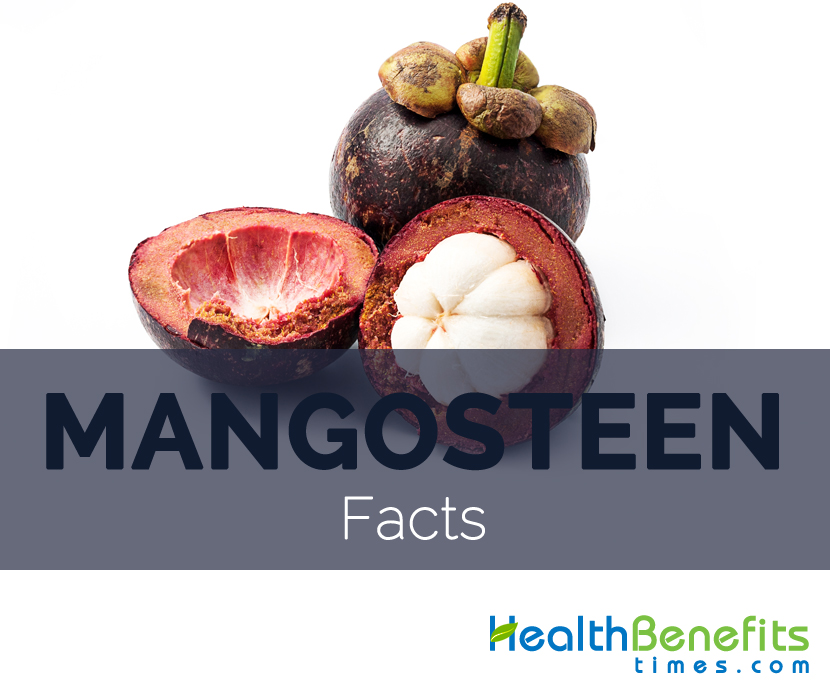
| Name | Mangosteen |
| Scientific Name | Garcinia mangostana |
| Common/English Name | Purple Mangosteen , Mangosteen, King’s-fruit |
| Name in Other Languages | Japanese : Mangosuchin,Mangoosutin Brazil : Mangostão (Portuguese) Laotian : Kok Mak Mang Kout Slovašcina : Mangostan Indonesia : Manggoita (Aceh), Bagustang, Manggastan Vietnamese : Cây Măng Cụt, Măng Cụt, Trái Măng Cụt Czech : Garcínie Mangostan Thailand : Mang Khút, Mangkhut, Mangkut India : Mangosteen Hannu ( Kannada ), Shulampuli Philippines : Manggis ( Sulu ), Mangostan ( Tagalog) French : Mangostan, Mangostanier, Mangoustan Portuguese : Mangostão Italian : Garcinia, Mangostana (Fruit) Malaysia : Masta, Mesta, Ple Semeta ( Semang ) Chinese : Dao Nian Zi, Mang Ji Shi Russian : Maнгуcтaн Mangustan Dutch : Manggis, Manggistan German : Mangostane (Tree), Mangostin,Mangostanbaum Sri Lanka : Mangoos, Maengus ( Sinhala ) Danish : Mangostan Korean : Mang Ko Seu T’in Spanish : Mangostán (Tree), Mangustán (Fruit) |
| Description | Mangosteen is actually an exotic, small round shaped fruits which is Sweet, tangy and juicy. Because of its exceptional appearance and taste, mangosteen is often admired as “the queen” of tropical fruits. |
| History and origin | Exact location is uncertain, but Mangosteen is native to the Malay archipelago in the old world tropics. It was found growing wild in south Trengganu and Ulu Kemaman in Malaya and in the Sunda Islands and Moluccas (Maluku) in Indonesia. Tree was first domesticated in Thailand, or Burma. It is now grown extensively in southeast Asia but during the last three centuries it was introduced to India, Sri Lanka, the New World tropics, to Northern Australia and to the Pacific islands. |
| Plant Growth Habit | Medium sized, erect, slow-growing, evergreen, lactiferous tree |
| Growing Climate | Thrives in a warm to hot, wet and humid tropics along with a uniform temperature and a short dry season. |
| Soil | Deep, fertile, friable soil, rich in organic matter. |
| Plant Size | Reaching about 30-60 feet (9-18 m) tall |
| Bark | New bark is bright green and smooth, becoming dark brown and rough with age |
| Branch | Nearly horizontal |
| Leaf | Leaves are elliptical, opposite, slightly glossy above, yellowish-green and dull beneath, 3 1/2 to 10 in (9-25 cm) long, 1 3/4 to 4 in (4.5-10 cm) wide |
| Flower | Dioecious, unisexual, solitary or in pairs at the branch apex, 1-2 inches (2.5-5 cm) in diameter, with 4 pinkish white petals and 4 persistent sepals. |
| Fruit shape & size | Deep purple, round shaped fruits capped with light green calyx at the stem end, 4–7 cm diameter |
| Fruit color | Pale green when young turns to pink to maroon to dark purple-black when ripe |
| Flesh color | snow-white |
| Fruit peel | Smooth, somewhat leathery skin |
| Flavor/aroma | Slightly sweet and sour flavor |
| Fruit Taste | Juicy, tangy and Sweet somewhat fibrous, along with fluid-filled vesicles |
| Seed | 1 to 5 completely developed seeds, ovoid-oblong, slightly flattened, 1 in (2.5 cm) long and 5/8 in (1.6 cm) wide, inedible and bitter in taste |
| Rind | Unpalatable, dark reddish-purple colored tough rind is about 1/4 to 3/8 in (6-10 mm) thick |
| Varieties/Types | Cherapu or Button mangosteen (Garcinia prainiana), African mangosteen or Imbe (Garcinia livingstonei), Lemon drop mangosteens (Garcinia madruno) |
| Season | At low altitudes from May to July At higher elevations, July and August or August and September |
| Major Nutrition | Carbohydrate 17.91 g (13.78%) Vitamin B9 31 µg (7.75%) Copper 0.069 mg (7.67%) Dietary Fiber 1.8 g (4.74%) Vitamin B1 0.054 mg (4.50%) Manganese 0.102 mg (4.43%) Vitamin B2 0.054 mg (4.15%) Iron 0.3 mg (3.75%) Vitamin C 2.9 mg (3.22% Magnesium 13 mg (3.10%) |
| Health Benefits |
|
| Calories in 1cup (100 gm.) | 73 |
| Traditional Medicinal Use |
|
| Precautions |
|
| How to Eat |
|
| Other Facts |
|
Comments
comments